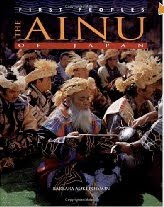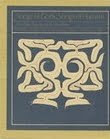 The following article was written by Sakamoto Kazuaki for the Yomiuri Shimbun:
The following article was written by Sakamoto Kazuaki for the Yomiuri Shimbun:The other day, a copy of a picture book titled The Ainu and the Bear arrived from Peter Howlett, an English instructor at the Hakodate La Salle High School in Hokkaido. It was, in fact, the English translation of the book that my own group (Tokachi Basho & Kankyo Laboratory) planned and produced as Iomante~ meguru inochi no okurimono, written by Ryo Michico, illustrated by Kobayashi Toshiya, and published in 2005 by Parol-sha.
Iomante refers to the Bear-sending ceremony of the Ainu people, which starts with a bear hunt in the winter. The hunt itself involves locating the den of a hibernating bear. If there happens to be a new-born bear cub in the den, only the mother bear is killed, and the cub is taken back to the kotan (village) alive. The meat and fur and every part of the mother bear goes to meeting the needs of village life. The bear is a gift from heaven, and every last part of it is greatly valued.
The bear cub is treated the same as a human child. It nurses at the human host-mother's breast until it is weaned, and it lives inside a house with its human host-family. As it grows bigger, the cub is transferred to a cage built of logs, but it continues to receive the very best food the village can provide. This continues for 1~2 years, until the day is set for the ritual that sends the bear cub's spirit back to heaven. Once again, no part of the bear is wasted. The meat and the fur are precious gifts that the bear has left behind in appreciation for the hospitality he has received from the village, and it is accepted with gratitude.
We Japanese, an agrarian people, considered this practice filthy, and detested it. In the old days, it was not our custom to eat the flesh of four-legged animals. With the dawn of the Meiji Era, our people did indeed begin to eat animal flesh, but not as the hunter peoples do. To this day, we eat meat without witnessing the killing of the animals that provide it. Can this be right?
The activity of eating, whether the food source is plant or animal, is ultimately the act of eating life-- of taking life. Surely this is the true significance of the greeting "itadakimasu (I will receive this)," which we say before each meal. When we get into the habit of seeing only voiceless plants and chunks of meat that bear no resemblance to the animal from which it came, our awareness of receiving life is dulled.
I am not saying that we should be forced to watch animals being processed at the meat processing plants. I myself once went to a chicken factory and became unable to eat chicken meat for a while after. But even without observing the killing, it should be possible to teach ourselves that we are receiving the life of another every time we eat.
This is precisely what we had in mind when we conceived of the Iomante picture book project. It so happens that two years after our book was published, the Hokkaido government rescinded the ban they had previously placed against the Iomante ceremony for being too "barbaric."
It was the Project Uepeker team, represented by Peter Howlett, that had come to me with a plan to publish an English translation of our book. It is our hope that the English version of this picture book will remind people all over the world of the gratitude we owe to the precious lives that are given up to keep us alive.
Sakamoto Kazuaki
(Note: This post is my English translation of an article Mr.Sakamoto wrote for the morning edition of the Yomiuri Shimbun newspaper, dated May 26, 2010.--d.d.)










